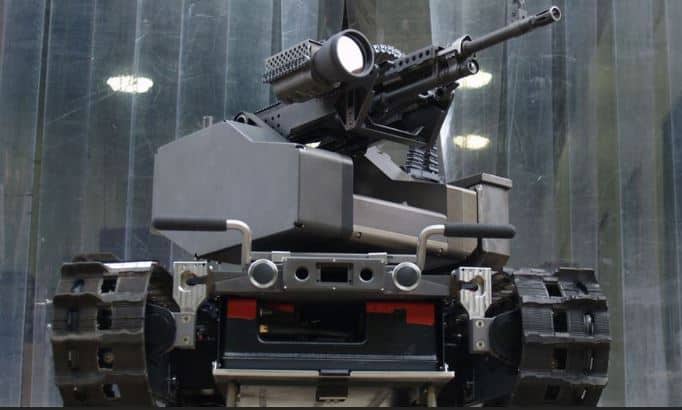
It has become common practice for United States military members to use drones to kill people abroad via remote control. On Tuesday, the San Francisco Board of Supervisors voted to OK cops doing the same in the California city.
A San Francisco cop, though, will not be the first cop in America to kill via the use of a drone of robot. A cop in Dallas, Texas already did it six years ago. I talked about that killing in a March of 2018 episode of Five Minutes Five Issues:
Jason Ditz wrote Monday at antiwar.com regarding video apparently showing Israel police using drones to drop tear gas canisters onto crowds of demonstrators in Gaza.
It can’t happen here, you may think. But, think again. In July of 2016, Dallas, Texas police cornered for hours a person they thought had shot several cops. The police then killed him by detonating explosives on a robot that had been remotely driven up to him under the pretense that the robot was bringing him a phone.
Of course, San Francisco Board of Supervisors members who voted for the remote control killing option say it will be a rare last resort measure. We heard that before when police SWAT teams were first introduced. Then, SWAT team use vastly expanded. Eastern Kentucky University Professor Peter B. Kraska provided details of this rise of SWAT in informative written testimony for a United States Senate Homeland Security and Governmental Affairs Committee hearing in September of 2014. In the testimony, Kraska used the term police paramilitary unit (PPU) interchangeably with the term SWAT team. Kraska wrote:
I most importantly learned that my micro-level experience might have been indicative of a much larger phenomenon. I decided to test empirically my ground-level observations by conducting two independently funded national-level surveys. These surveys of both large and small police agencies yielded definitive data documenting the militarization of a significant component of the U.S. police (Kraska and Kappeler 1997; Kraska and Cubellis 1997). This militarization was evidenced by a precipitous rise and mainstreaming of police paramilitary units. As of the late 1990s, 89 percent of American police departments serving populations of fifty thousand people or more had a PPU, almost double of what existed in the mid-1980s. Their growth in smaller jurisdictions (agencies serving between 25 and 50,000 people) was even more pronounced. Currently, about 80 percent of small town agencies have a PPU; in the mid-1980s only 20 percent had them.
While formation of teams is an important indicator of growth, these trends would mean little if these teams were relatively inactive. This was not the case. There had been more than a 1,300 percent increase in the total number of police paramilitary deployments, or call-outs, between 1980 and the year 2000. Taking into consideration follow up research in 2007, and extrapolating from the original research, there are an estimated 60,000 SWAT team deployments a year conducted among those departments surveyed; in the early 1980s there was an average of about 3,000 (Kraska 2001). The trend-line demonstrated that this growth began during the drug war of the late 1980s and early 1990s.
These figures would mean little if this increase in teams and deployments was due to an increase in PPU’s traditional and essential function – a reactive deployment of high-risk specialists for particularly dangerous events already in progress, such as hostage, sniper, or terrorist situations. Instead, more than 85 percent of these deployments were for proactive deployments, specifically random patrol work, and no-knock and quick-knock dynamic entries into private residences, searching for contraband (drugs, guns, and money). This pattern of SWAT teams primarily engaged in surprise contraband raids held true for the largest as well as the smallest communities. PPUs had changed from being a periphery and strictly reactive component of police departments to a proactive force actively engaged in fighting the drug war.
As further evidence, a surprisingly high percentage of police agencies also deployed their teams to do routine patrol work in crime “hot spots”; a strong indicator of PPU normalization. In fact, a number of U.S. police departments are currently purchasing, through homeland security funding, military armored personnel carriers (APC’s), some of which are being used for aggressive, proactive patrol work. The Pittsburg police department, for example, purchased a $250,000 APC using homeland security grant money (Deitch 2007). It is being used to conduct “street sweeps” in high crime neighborhoods. The personnel involved are SWAT officers outfitted with full police paramilitary garb and weaponry.
Will someone decades from now be presenting similar testimony regarding the vastly expanded practice of cops using drones and robots to kill?


